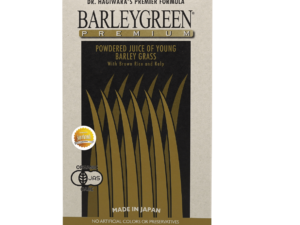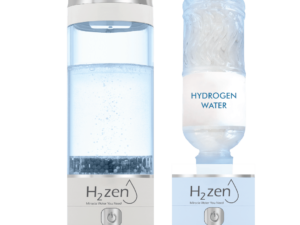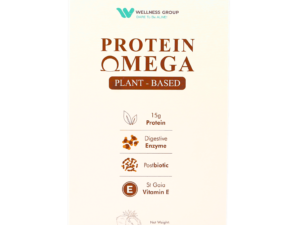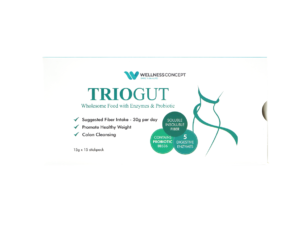What if a simple, vibrant vegetable sitting in your local market held a key to supporting your body’s natural defenses against a formidable foe? This question lies at the heart of exploring nature’s potential in modern health strategies.
Cancer remains a leading global health challenge, driving an urgent search for supportive, natural approaches. Functional foods, which offer benefits beyond basic nutrition, are gaining significant attention. Among them, the humble red beetroot stands out with a rich history and promising scientific backing.
This root vegetable, known scientifically as Beta vulgaris L., is more than just a colorful addition to a salad. It is a powerhouse of bioactive compounds. Traditional healing systems from Persia to China have long valued it. Today, research is uncovering how its unique nutrients may interact with cancer cells.
This guide delves into the science behind this functional food. It explores how its components work synergistically to support the body. For those in Malaysia seeking personalized advice, Wellness Group offers expert consultations. They can help integrate evidence-based nutrition into a holistic health plan.
Key Takeaways
- Red beetroot is a functional food with a history of use in traditional medicine.
- It contains a powerful combination of bioactive compounds.
- Scientific research is exploring its potential role in cancer care.
- These compounds may work through several biological mechanisms.
- Integrating such foods can be part of a comprehensive wellness strategy.
- Professional guidance can help personalize dietary choices for health goals.
Introduction to Beetroot and Its Role in Cancer Prevention
The journey of the common garden vegetable, Beta vulgaris, from ancient healing traditions to modern cancer research is a fascinating story of rediscovery. This red beet root has been valued for centuries across diverse cultures for its health-promoting properties.
Traditional Persian Medicine, for instance, specifically documented its use in managing metastatic progression. This historical belief in its potency is now a key focus of contemporary science.
The scientific field of cancer chemoprevention explores how natural substances can prevent or delay cancer development. The compounds within this vegetable show promising potential in influencing cellular processes that can stop cancer initiation and progression.
Its global popularity among individuals seeking complementary support, from Trinidad to Germany, reflects a widespread belief in its benefits. This goes beyond basic nutrition, touching on active biological support.
| Medicinal System | Region/Culture | Historical Perspective on the Vegetable |
|---|---|---|
| Traditional Persian Medicine | Persia (Iran) | Used in strategies for managing cancer metastasis. |
| Ayurvedic Medicine | Indian Subcontinent | Valued as a general tonic and blood purifier. |
| Traditional Chinese Medicine | China | Employed to support vitality and overall wellness. |
Understanding this historical and scientific background empowers people to make informed, proactive choices for cancer prevention. It turns a simple dietary decision into a strategic health move.
Nutritional and Phytochemical Profile of Beetroot
The deep red pigment that characterizes this vegetable is just the visible tip of its extensive phytochemical arsenal. Red beetroot contains a remarkable combination of nutrients and bioactive compounds that work together to support health.
Betalains and Their Antioxidant Properties
Betalains give red beetroot its vibrant color and serve as natural beetroot food color in the industry. These unique pigments demonstrate powerful antioxidant activity through effective free radical scavenging.
They neutralize harmful reactive oxygen species that can damage cells. The radical scavenging capacity of betalains compares favorably with synthetic antioxidants.
| Compound Type | Specific Compounds | Concentration Range | Primary Function |
|---|---|---|---|
| Betacyanins | Betanin (75-95% of pigments) | 300-600 mg/kg | Powerful antioxidant, red pigment |
| Betaxanthins | Vulgaxanthin, Indicaxanthin | Lower concentrations | Yellow-orange pigments, antioxidant |
| Other Betalains | Betanidin, Isobetanin | Trace amounts | Supporting antioxidant roles |
Other Bioactive Polyphenols and Flavonoids
Beyond betalains, red beetroot food contains abundant polyphenolic compounds. These include chlorogenic acid and caffeic acid, which function as membrane antioxidants.
The vegetable also provides flavonoids like quercetin and rutin. These compounds add another layer of protection against oxidative stress in the body.
Scientific Evidence Linking Beetroot to Cancer Research
Laboratory investigations provide a crucial bridge between traditional beliefs and modern clinical applications for this vibrant root. A substantial body of research explores its effects in controlled settings.
These studies form the foundation for understanding its potential role. They examine interactions at the most basic biological levels.
Overview of Preclinical Studies
Research using various cancer cell lines has yielded promising results. Experiments on MCF-7 cells, a model for breast cancer cell research, show significant activity.
Extracts demonstrate a ability to reduce viability in a dose-dependent manner. This means higher concentrations lead to greater effects on the malignant cell line.
Colorectal models like Caco-2 and HT-29 cell lines also respond. The compound betanin appears particularly potent against these cancer cell lines.
A key finding across in vitro vivo work is selectivity. The extracts often impact malignant cell lines while sparing normal cells.
Clinical Insights and Research Data
Beyond the lab, early human studies offer supportive data. They often measure changes in antioxidant status and oxidative stress markers.
Some in vitro vivo research highlights a synergistic effect. Combining extracts with certain chemotherapy drugs can enhance the drugs’ effectiveness.
This suggests a potential supportive role in comprehensive care strategies. The journey from lab findings to widespread human application continues.
Mechanisms Behind Inhibiting Cancer Cell Growth
At the molecular level, Beta vulgaris reveals a sophisticated defense system against abnormal cell development. The vegetable’s compounds work through multiple pathways to address cell proliferation concerns.
These natural agents demonstrate remarkable precision in their actions. They target specific genetic switches that control cell life cycles.
Molecular Pathways and Gene Regulation
The primary mechanism involves regulating apoptosis-related genes. Compounds from Beta vulgaris significantly increase pro-death genes while decreasing survival genes.
This dual action activates both intrinsic and extrinsic cell death pathways. The result is targeted inhibition of cancer cell proliferation while protecting healthy cells.
A critical protective function involves preventing DNA damage caused by oxidative stress. The compounds act as direct scavengers of harmful molecules.
They also boost the body’s own antioxidant defense systems. This creates a dual shield against DNA damage apoptosis in normal tissues.
The Nrf2 transcription factor becomes activated, enhancing cellular protection mechanisms. This master regulator increases detoxification enzymes that neutralize potential threats.
Anti-inflammatory effects work through interference with NF-κB signaling. This reduces inflammation that can promote abnormal cell proliferation.
These multi-targeted approaches make Beta vulgaris compounds valuable for comprehensive strategies. They address oxidative stress, inflammation, and genetic regulation simultaneously.
Exploring How Beetroot Slow Down the Growth of Cancer Cells
Research on colorectal models reveals powerful cellular responses to specific natural compounds. Scientists observe these effects in laboratory settings using established cell lines.
This root vegetable’s extracts demonstrate a clear relationship between dosage, time, and effect. Higher concentrations over longer periods, especially around 48 hours, yield the strongest impact on malignant cancer cells.
Key Cellular Mechanisms
The primary action involves triggering programmed cell death, known as apoptosis. In studies using HT-29 and Caco-2 cell lines, extracts induced apoptosis in over 80% of cells in some cases.
This process is highly selective. It targets abnormal cancer cells while leaving healthy ones unaffected. This selectivity is a significant advantage.
The compounds disrupt the energy production within a cancer cell. They also interfere with signals that tell cells to divide.
| Treatment | HT-29 Cell Line Apoptosis | Caco-2 Cell Line Apoptosis |
|---|---|---|
| Beetroot Hydro-Alcoholic Extract (BHE) | 81.7% | 68.2% |
| Purified Betanin | 91.0% | 72.1% |
Given that colorectal cancer is the third most common cancer globally, these findings are highly relevant. Dietary choices can be a practical part of a prevention strategy for those at risk.
Factors like diet and lifestyle influence colorectal cancer risk. Incorporating functional foods supports broader health goals and promotes natural cell death mechanisms in dangerous cancer cells.
Antioxidant and Anti-Inflammatory Activities of Beetroot
Scientific rankings consistently place this crimson vegetable among the top ten antioxidant-rich foods available. Its compounds work through multiple pathways to protect cells from damage.
Free Radical Scavenging and Reduction of Oxidative Stress
The radical scavenging antioxidant capacity of red beetroot rivals synthetic compounds used in food preservation. Betalains demonstrate exceptional free radical scavenging against various harmful molecules.
| Source | Primary Antioxidant Compound | Relative Antioxidant Strength |
|---|---|---|
| Red Beetroot | Betalains | Comparable to BHT* |
| Butylated Hydroxytoluene (BHT) | Synthetic antioxidant | Industry standard |
| Blueberries | Anthocyanins | High |
| Spinach | Lutein | Moderate-High |
Chronic oxidative stress occurs when reactive oxygen species overwhelm the body’s defenses. This imbalance drives cellular damage that can initiate health concerns.
Compounds in this vegetable reduce ROS production in immune cells by approximately three-fold. This prevents oxidative damage during inflammatory responses.
The anti-inflammatory effects complement the antioxidant actions perfectly. They work together to address two fundamental processes simultaneously.
As one researcher noted,
The dual-action nature of these compounds makes them particularly valuable for comprehensive health strategies.
By tackling both oxidative stress and inflammation, red beetroot offers powerful protective benefits. This makes it an excellent addition to preventive health approaches.
Impact on Apoptosis and Cancer Cell Proliferation
Cellular self-destruction represents one of nature’s most elegant defense systems against abnormal development. This programmed process, called apoptosis, helps eliminate potentially dangerous cells before they cause problems.
Caspase Activation and DNA Damage Prevention
Research shows that compounds from the red root vegetable significantly enhance caspase-3 activity. This “executioner” enzyme plays a crucial role in carrying out the apoptotic program effectively.
Studies demonstrate impressive protection against dna damage. When cells face oxidative stress, these natural compounds reduce genetic harm by up to 50%.
The Comet assay reveals how treatment minimizes DNA fragmentation. This visual test shows shorter “tails” in protected cells, indicating robust genetic safeguarding.
In studies involving human breast cancer models like MCF-7 cells, extracts show significant effects. They impact estrogen receptor-positive breast cancer cells specifically.
The reduction in cell proliferation follows a dose-dependent pattern. Higher concentrations can decrease malignant growth by half or more.
Changes in mitochondrial membrane potential trigger the intrinsic apoptosis pathway. This bypasses resistance mechanisms that problematic cells sometimes develop.
Triterpene compounds induce cell cycle arrest at the sub-G1 phase. This represents cells undergoing programmed elimination, providing additional protective mechanisms.
The dual action creates intelligent selectivity. It prevents dna damage in healthy cells while promoting damage apoptosis in compromised ones.
Beetroot in Chemoprevention Strategies
Integrating functional foods into daily eating patterns represents a practical approach to supporting the body’s natural defenses. Research shows that dietary choices contribute to 30-35% of all cancer cases, making cancer prevention through nutrition highly impactful.
The concept of cancer chemoprevention focuses on using natural substances to reduce risk before disease develops. Beta vulgaris, commonly known as red beet, offers a proactive strategy through its rich bioactive compounds.
Integration into a Cancer Prevention Diet
Adding beet root to your diet doesn’t require major changes. Simple additions like roasted vegetables in salads or fresh juices can provide therapeutic benefits. Consuming it 3-4 times weekly ensures consistent exposure to protective compounds.
Established dietary patterns like the Mediterranean and DASH diets naturally include this red beet. These approaches demonstrate how traditional eating habits intuitively incorporate cancer-protective foods.
Beta vulgaris works well with other preventive foods. Combining it with cruciferous vegetables, berries, and green tea creates a comprehensive approach. Regular consumption over years provides sustained antioxidant and anti-inflammatory effects.
For personalized guidance on integrating Beta vulgaris into your wellness plan, Wellness Group offers expert consultations. Contact them at +60123822655 Monday-Friday 9:30 am-6:30 pm, Saturday 10 am-5 pm for tailored Malaysian-specific advice.
Beetroot Juice and Extracts: Comparative Perspectives
For those looking to integrate this functional food into their routine, understanding the differences between juicing and extraction is essential. Both forms offer unique ways to deliver the vegetable’s powerful compounds.
Each method affects the concentration and bioavailability of the active ingredients. This knowledge helps in making an informed choice for personal health goals.
Hydro-Alcoholic Extracts and Betanin Concentration
Scientific preparation often uses a hydro-alcoholic process. This method concentrates the bioactive compounds from red beetroot.
It yields a potent powder, rich in betalains. Isolated betanin from these extracts shows a very strong effect in lab studies.
However, whole beetroot juice contains a full spectrum of supportive compounds. These may work together for a greater overall benefit.
Differences Between Juicing and Whole Foods
Fresh beetroot juice is a highly bioavailable option. Juicing breaks down plant cells, releasing betalains for easy absorption.
Studies using drinking water red beetroot juice show it can protect against liver stress. It helps maintain healthy antioxidant enzyme levels.
Consuming the whole vegetable provides valuable dietary fiber. Betanin-enriched red beetroot products offer a standardized, convenient alternative.
Whether you choose juice, extract, or the whole food, regular intake is key. All forms contribute valuable support to a wellness-focused lifestyle.
Complementary Lifestyle Factors for Cancer Prevention in Malaysia
A proactive approach to health in Malaysia combines smart dietary choices with consistent physical activity. Research shows that up to 35% of cancer cases can be prevented through healthy habits.

Diet and Exercise Considerations
In Malaysia, where rates of colorectal cancer have been increasing, a comprehensive strategy is essential. This includes enjoying a variety of fruits and vegetables.
Integrating Beta vulgaris into local dishes, juices, or salads is a simple and effective step. It adds powerful antioxidants to the diet.
Regular physical activity is a critical partner to good nutrition. Aim for at least 150 minutes of moderate exercise each week.
This helps reduce inflammation and maintain a healthy weight. Both are key factors in lowering the risk for colorectal cancer.
For individuals with conditions like inflammatory bowel disease, these lifestyle choices are even more important. Such conditions can increase cancer risk.
The anti-inflammatory properties of Beta vulgaris may offer specific benefits for those with inflammatory bowel disease. It supports the body in two ways.
Wellness Group offers personalized consultations for Malaysians. They can help create a sustainable plan that fits your life. Contact them at +60123822655, Monday-Friday 9:30 am-6:30 pm, Saturday 10 am-5 pm.
Role of Beetroot in Managing Oxidative Stress and DNA Damage
Shielding our cells from harm is a primary goal of preventive health. Oxidative stress occurs when unstable molecules overwhelm the body’s defenses. This imbalance is a key driver of dna damage that can initiate health concerns.
Scientific studies highlight the protective effect of red beetroot. In animal research, juice from this root vegetable guarded against chemically-induced liver injury. It significantly reduced genetic harm in blood cells.
The compounds in this vegetable work on multiple fronts. They directly neutralize harmful molecules. They also boost the body’s own detoxification enzymes, like NQO1.
Research on human cell lines shows even low concentrations of betanin, a key pigment, offer protection. It significantly reduced hydrogen peroxide-induced dna damage. This suggests dietary intake can provide meaningful defense.
This protective effect extends to organs like the kidneys. By reducing oxidative stress and inflammation, red beetroot supports overall cellular health. It helps maintain the integrity of our genetic material.
Traditional and Complementary Medicine Insights on Beetroot
Across continents and centuries, traditional healing systems have independently recognized the value of a particular root vegetable. These ancient practices offer fascinating perspectives on Beta vulgaris and its role in supporting health.
Traditional Persian Medicine, one of the world’s oldest systems, has used this plant for managing metastatic progression. This ancient wisdom now finds validation in modern laboratory studies.
Traditional Persian and Ayurvedic Perspectives
Ayurvedic medicine classifies red beetroot as a blood purifier and liver tonic. These traditional properties align perfectly with its scientifically proven antioxidant effects.
In traditional Chinese medicine, the vegetable is considered to have cooling properties. This concept correlates with modern understanding of its anti-inflammatory benefits.
Arab traditional medicine has long valued this root for blood disorders and as a general tonic. This recognition of its vitality-boosting effects spans multiple cultures.
The global use of Beta vulgaris among patients with breast cancer shows cross-cultural recognition. From Trinidad to Germany, people report better energy and reduced treatment side effects.
For breast cancer specifically, traditional use aligns with modern evidence of cytotoxic effects. This creates a comprehensive understanding that respects cultural wisdom.
Traditional preparation methods like juicing and blending have been passed down through generations. These techniques effectively preserve the bioavailability of beneficial compounds in red beetroot.
Summary of Preclinical and Clinical Studies on Beetroot's Benefits
White blood cell studies offer unique insights into how this vegetable’s compounds protect surrounding tissues. Research using human polymorphonuclear neutrophils shows these compounds reduce oxidative damage that can contribute to abnormal development.
Laboratory investigations across diverse cell lines demonstrate consistent activity. Studies include prostate (PC-3), colorectal (HT-29, Caco-2), liver (HepG2), lung (A549), and leukemia (K562) models. Each shows positive results against abnormal cells.
Breast cancer research stands out as particularly promising. Multiple studies reveal cytotoxic effects on MCF-7 cells, representing the most common breast cancer subtype. The protective effect extends across multiple organ systems.
Animal vitro vivo studies complement these findings. They show reduced precancerous lesions and tumor formation in living organisms. This broad-spectrum activity suggests comprehensive benefits.
While human clinical trials specifically focusing on cancer outcomes remain limited, existing studies confirm safety and improved oxidative stress markers. The consistency across cell lines and animal models provides strong foundational evidence for this functional food’s potential role in wellness strategies.
Safety, Dosage, and Considerations for Cancer Patients
When incorporating functional foods into a wellness plan, dosage and safety considerations take priority. Understanding how to use red beetroot effectively ensures maximum benefit with minimal risk.
Potential Side Effects and Optimal Intake
Red beetroot and its betalain compounds demonstrate excellent safety in human consumption. Regulatory approval as food coloring E162 confirms their non-toxic nature after extensive testing.
The optimal preventive dosage ranges from 250-500 mL of fresh juice or 200-400 grams of whole vegetable consumed 3-4 times weekly. This frequency supports consistent antioxidant protection.
Research shows remarkable selectivity where betanin reduces survival in malignant cell lines while preserving normal cells. This targeted action minimizes interference with healthy tissue function.
Betalains absorb rapidly, peaking in plasma within three hours and clearing by eight hours. Regular consumption in drinking water or meals provides sustained benefits rather than single large doses.
The most common side effect is harmless beeturia—red urine occurring in 10-14% of people. Those with kidney stones should moderate intake due to oxalate content, though cooking reduces this significantly.
Patients on anticoagulants or chemotherapy should consult healthcare providers about appropriate intake levels. For personalized guidance on incorporating red beetroot safely into your diet, especially during treatment, contact Wellness Group at +60123822655 (Monday-Friday 9:30 am-6:30 pm, Saturday 10 am-5 pm).
Future Directions and Research Gaps in Beetroot's Anticancer Effects
Despite promising laboratory findings, the full potential of this root vegetable’s anticancer properties requires deeper investigation. While studies show encouraging results, critical knowledge gaps remain.
Ongoing Studies and Areas for Further Investigation
Researchers need to better understand how Beta vulgaris compounds work at the molecular level. The mechanisms behind their selective action on abnormal cells remain unclear.
Most evidence comes from studies using various cancer cell lines. Large human trials are essential to confirm these laboratory findings. This represents the biggest research gap.
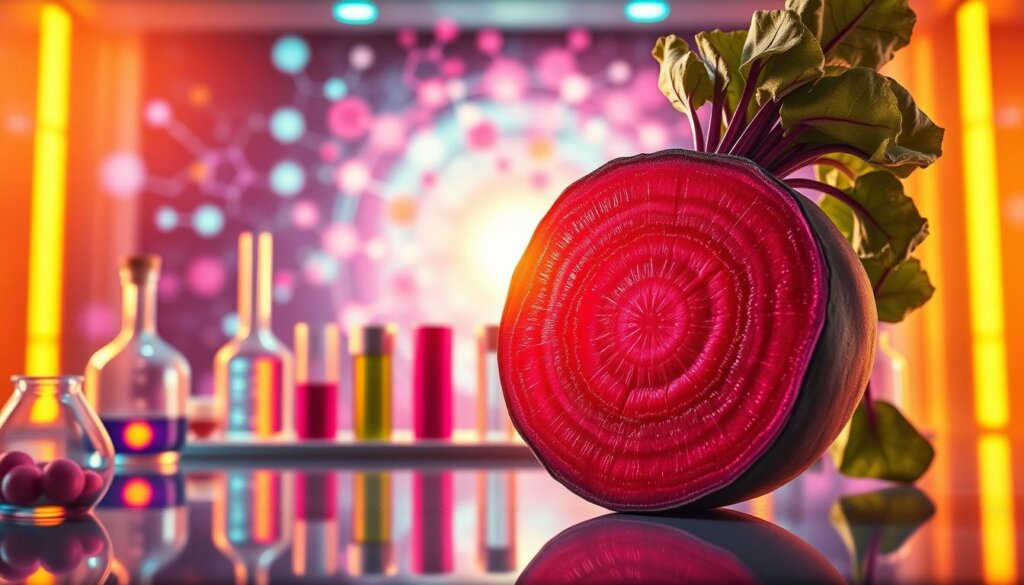
Different cancer types need more attention. While human breast cancer and colorectal models have been studied, other common cancers lack research.
Optimal dosing and delivery methods require clarification. Scientists must determine whether juice, extracts, or whole vegetables offer the best protection.
Combination studies with conventional treatments show early promise. More research could reveal synergistic effects that improve patient outcomes.
Long-term human studies tracking cancer incidence in populations with high consumption would provide valuable real-world evidence. This would account for complex genetic and environmental factors.
Conclusion
Evidence from multiple research domains points to practical dietary choices that can support cellular health. The journey from traditional medicine to modern science validates the protective potential of certain functional foods.
Red beetroot, scientifically known as Beta vulgaris, offers a multi-faceted approach through its rich bioactive compounds. These natural substances work synergistically to address various pathways involved in abnormal cell development.
The selectivity of these compounds—targeting problematic cancer cells while preserving healthy ones—makes this approach particularly valuable. For Malaysian residents seeking natural prevention strategies, incorporating red beetroot into regular meals represents an accessible, evidence-based choice.
Ready to incorporate this functional food into your wellness plan? Contact Wellness Group at +60123822655 for personalized guidance. Their team is available Monday-Friday 9:30 am-6:30 pm and Saturday 10 am-5 pm.
FAQ
Can beetroot really help fight cancer?
Research shows that compounds in beetroot, like betalains, have properties that may interfere with cancer cell proliferation. Studies on cancer cell lines, including those for breast cancer and colorectal cancer, indicate these compounds can induce cell death and reduce oxidative stress, suggesting a potential role in cancer prevention.
How does beetroot protect cells from damage?
The antioxidant activity in beetroot, particularly from betanin, acts as a powerful free radical scavenger. This helps neutralize reactive oxygen species (ROS), which are known to cause DNA damage. By reducing oxidative stress, it may offer a protective effect against mutations that can lead to cancer cell development.
What is the best way to consume beetroot for its potential benefits?
Both whole red beetroot and its juice contain bioactive compounds. Some research suggests that concentrated extracts or betanin-enriched products might have higher potency. However, incorporating the whole vegetable into your diet or drinking water with red beetroot juice are excellent ways to obtain its nutrients as part of a balanced cancer chemoprevention strategy.
Are there any side effects to consuming a lot of beetroot?
For most people, beetroot is safe. A common, harmless side effect is a change in urine or stool color due to the natural food color. Individuals with certain conditions, like kidney stones or inflammatory bowel disease, should consult a doctor, as high intake of oxalates might be a concern. Moderation is key.
Has beetroot been studied in human clinical trials for cancer?
While numerous preclinical studies using cell lines and animal models show promising results, such as triggering apoptosis in human breast cancer cells, more extensive clinical trials in humans are needed. Current insights are largely based on laboratory research, and future studies will help clarify its direct impact on cancer prevention in people.


